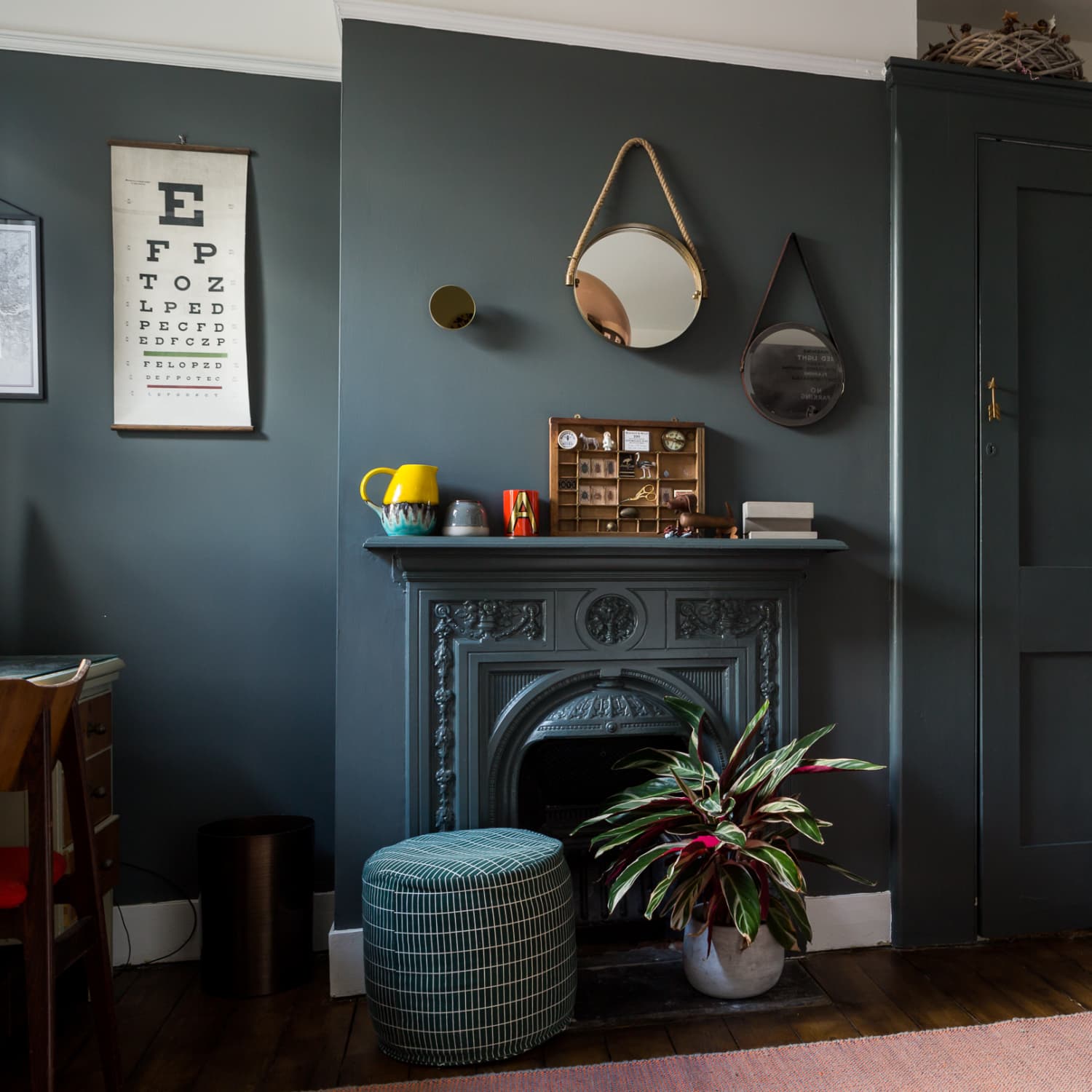
Tips for Painting Walls a Dark Color
Are you thinking about painting your walls a dark color? If so, you’re not alone. Adding a dark accent wall is a big interior design trend right now. It is a great way to give an otherwise neutral room a welcome splash of color and depth.
Contrary to popular belief, dark walls don’t make your space feel smaller. In fact, they can trick the eye and actually make small rooms look more spacious.
Start with the right supplies
To save on time and sanity, you’re going to need more than an old roller and a paintbrush. An investment in the right supplies will make for a (literally!) smoother process throughout.
Start by selecting a roller with the right nap, or thickness, for your project. The rougher the surface, the thicker your roller should be—thicker naps are designed to hold more paint in order to fill the crevices of bumpy surfaces. If your walls are dark but smooth, opt for a thinner nap or a foam roller. It’ll give smooth coverage (and is usually ideal for indoor walls).
Choose the Right Color
Be smart when it comes to choosing the right color. It is hard work to paint your walls a dark color, so make sure you pick a color that you won’t get tired of and will like for a while. This is why you never want to go too extreme and become overwhelmed. Also, extremely dark colors can take away from the details in the room. You might want to experiment first and test out different colors until you find the ideal one. This doesn’t mean you have to paint the whole wall. Paint a small area and test out shades before making the big commitment.
Play it up with light-colored furniture
the trick to making sure you don’t weigh down the whole room comes down to the furniture. “It might sound counterintuitive, but if you paint a room a dark color and then put light furniture in it, it tricks your eye into thinking the room is not only bigger but has more natural light.
Prepping Your Walls
Once you find the right room and the right color, it is time to prep the walls! This is where you are going to add texture to hide defects.
If you are going to do the job yourself, remember to texturize your walls and then prime them. Before starting this, make sure to tape off areas that you aren’t going to paint for a smooth finish. Remember to use more than one coat of paint. With dark colors, you may even need up to 3 coats, but a high quality paint will limit the amount of coats you need. Always make sure that you are spreading out the paint evenly and use a small paint brush to fill in the areas around the tape.
Consider the amount of light in a room
rooms that are already dark and small are ideal for playing around with dark colors. “Play to the room’s natural light,” “If it’s a tucked away space with little or no light, lean into that with a darker color,” Deep hues also work great in intimate spaces—think bedrooms, dens, and powder baths—since they up the moody factor. Or, try them in a pass-through spaces like entryways, hallways, and powder rooms.
Don’t Forget A Primer
Painting dark walls take time, and you might need two to three coats of paint. You can reduce your painting time by using a dark-tinted primer first. This is crucial if you’re trying to paint over a light colored wall, as the color will try to bleed through the dark paint and highlight every spot you missed.
Use multiple coats of the best primer to cover dark paint
Usually, you can get away with one coat of primer. But when it comes to painting over a dark color with a lighter one, two coats of primer(literally) put an extra layer between the colors and reduce the chances that the dark color will bleed through.


Leave a Reply